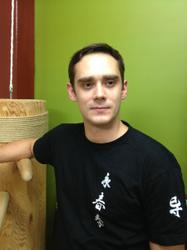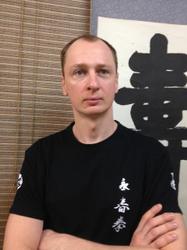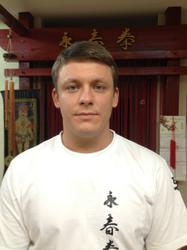Wing Chun
Wing Chun is a martial arts form originating in China and one of over five hundred different styles of Kung-Fu. Its origins go back to approximately 250 years ago. For a long time this type of combat was kept secret and was passed down from one family clan to another. Large scale expansion was strictly forbidden. But, in the middle of our own century, it ventured’ outside China and spread first into Vietnam and Hong Kong, then later to America and Europe. Approximately 20 years ago it started to be learned in Russia.
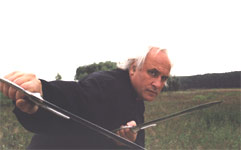 Wing Chun is an ancient form of martial arts. According to legend its founder was a famous Shaolin. After the defeat of Shaolin by the Manchu invasion, surviving monks swore that they would create a new martial arts style, one that would be effective against the tall and strong Manchus yet one so simple that it could be taught to many people quickly. The style was eventually created at the beginning of the 17th Century in the South of China (modern Foshan province) and was named Wing Chun’ (the Pekinese say Yun Chun). It translates as Eternal Spring’.
Wing Chun is an ancient form of martial arts. According to legend its founder was a famous Shaolin. After the defeat of Shaolin by the Manchu invasion, surviving monks swore that they would create a new martial arts style, one that would be effective against the tall and strong Manchus yet one so simple that it could be taught to many people quickly. The style was eventually created at the beginning of the 17th Century in the South of China (modern Foshan province) and was named Wing Chun’ (the Pekinese say Yun Chun). It translates as Eternal Spring’.
Almost 400 years later, it has become widely known and popular. Nowadays Wing Chun is studied by hundreds and thousands of men, women and children in Australia, Germany, Vietnam, Italy, the People’s Republic of China, Malaysia, USA, France and many others. Classes teach people real self-defence skills, excellent physical conditioning and self-confidence.
Wing Chun is an art of close-range combat, which today is the most effective form of self-defence. It absorbed all the best from the Eastern martial arts (the school of the famous Master Bruce Lee is based on this technique). Its main principles include: speed, rationality, sharpness and high leaping jumps. Wing Chun uses short-range strikes, which have high strength thanks to internal energy impulses. There is nothing excessive in Wing Chun. Only precise, energy-conserving moves.
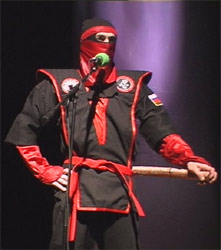 Some types of eastern martial arts, i.e. those commonly called external’ styles do not actually reduce a person’s aggression (in the early learning stages) but can effectively provoke fiery situations. Right from the beginning, Wing Chun classes utilize internal energy to neutralize aggressive impulses, making a person calmer with a more well-balanced mind.
Some types of eastern martial arts, i.e. those commonly called external’ styles do not actually reduce a person’s aggression (in the early learning stages) but can effectively provoke fiery situations. Right from the beginning, Wing Chun classes utilize internal energy to neutralize aggressive impulses, making a person calmer with a more well-balanced mind.
There is no doubt that a person who is well skilled in martial arts techniques can offer serious resistance in critical situations, causing great concern to opponents. The stronger a person becomes, however, (particularly in terms of consciousness and confidence) the more generous and forgiving he becomes towards other people’s weaknesses. Any aggression, therefore, is viewed as a weakness.
Generally, negative physical outcomes do not befall people who have mastered the skills of martial arts. A strong person does not attract the bad’. In fact, bad is afraid’ of him. The same principal applies to everyday situations. People unconsciously bow to an internal strength, which comes from a companion (a warrior) and a situation resolves freely in their favour.
As well as developing strength through martial arts (particularly Wing Chun) a particular sensitivity is also encouraged. The secret techniques of Chi Sao’ or sticky hands’ are used in Wing Chun to achieve this sensitivity. A pupil becomes extra-sensitive to the opponents’ body movements and learns to control all of his motions and react with precision.
There is no age limit for those attending Wing Chun classes. As mentioned earlier, the Wing Chun technique, unlike other Wushu styles, does not seriously stretch muscles (like the splits or other acrobatic exercises). This would be off-putting to an adult. So one can start Wing Chun at any age!
Is Wing Chun only for men?
No, not at all! One of the most important principles of Wing Chun is flexibility versus hardness, weakness versus strength. Also, according to legend, this style was designed by a lady! That is why, once trained in Wing Chun, the physically weaker person (a woman is objectively weaker then a man) has every chance to beat the stronger one.



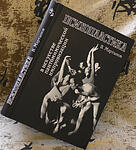

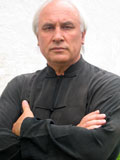 Коан – вопрос к членам Федерации Юн Чун Цюань от президента В.В. Мартынова: «Что Вы сделали для Федерации из того, что не мог бы сделать любой другой за деньги?»
Коан – вопрос к членам Федерации Юн Чун Цюань от президента В.В. Мартынова: «Что Вы сделали для Федерации из того, что не мог бы сделать любой другой за деньги?»
